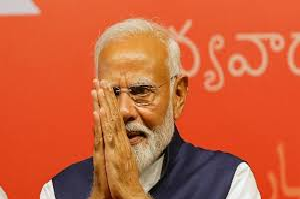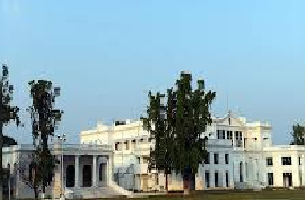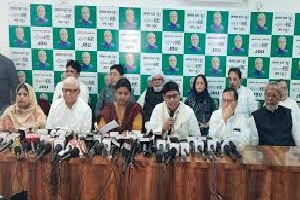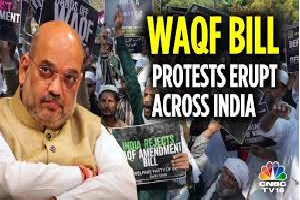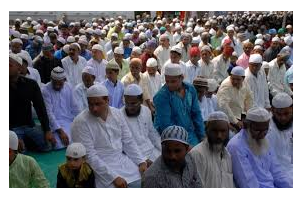11

Today's Edition
New Delhi, 11 December 2023
Shivaji Sarkar

Finance Minister Nirmala Sitharaman has projected a promising economy that could take the country to a path of glory with huge capital expenditure and rising deficits that is showcased politically to charm the voters.
She is partially correct during a short duration discussion on economy. But despite efforts deficits remain high, exports drop, rupee slides and government measures like high cess on petrol, rechristened additional excise duties, and tolls have not added to the ease of the people.
Occasional growth like in the second quarter of the year at 7.6 percent being termed as India being the fastest-growing major economy though cheer up countrymen, is not a solution to the overall economic situation. Despite rise in estimated GDP to Rs 41.74 lakh crore in 2023-24, against Rs 38.78 lakh crore last fiscal or 6.2 percent, the RBI growth estimates remain unchanged at 6.5 percent in September quarter.
India’s growth is not constant but seasonal often to cater to the festive mood. Most world economies are taking corrective steps before that. It seems, as per RBI, an economy on fire facing persistent threat of food inflation and severe constriction on farm level prices, both considered extremes. It calls for easing of policies and firming of dollar that makes imports expensive.
The minister compares achievements with developed countries and their growth. Indian economy despite its large size has yet to match the growth parameters of France, Germany, UK, US or China, though many of them are in slowdown. Their economies are larger. Even a small growth is substantial than what India could achieve.
Much of the inflation is because of government policies like maintaining high petrol prices despite a longer period of soft international prices. Despite Israel-Gaza or Russia-Ukraine being on fire crude oil prices have slumped to $ 70 a barrel and may fall further as western economies, particularly the US sees a glut of oil owing to slowdown. Instead of a demand of 2 million barrels, it remains at 594,000 barrels. The slowing global economy is impacting Indian exports.
While the benefits of low oil prices are not being passed on to the consumers in India, it has led to an inflationary economy. Indian GST is high. The organisations, like National Highway Authority of India, have taken advantage to jack up road toll rates atrociously. Toll collections have increased to Rs 48028 crore in 2022-23 from Rs 33907 crore last year and Rs 17942 crore in 2017-18. It’s hurting the economy, including farmers’ input and transportation costs, according to the Statista site.
Since July, 2022, the government has reduced petrol cess on exports of Reliance and Nyara but none to poor domestic consumers. It remains at Rs 32.90 per litre of diesel and petrol.
Petro road cess collection was Rs 4.55 lakh crore in 2020-21 as per Rajya Sabha answer by MoS Rameshwar Teli. By 2023, it can be assumed to have risen further. There is now a diversion of funds from the cess for other purposes.
Allocations for education and health have been cut and insurance premia allowed to rise by 30 percent.
Farmers finding prices unremunerative have been destroying many vegetable crops, including cauliflower, onion and tomato during the season though prices of many commodities spiralled in the retail market.
The opposition charged the government with being cut off from the ground realities during a short duration discussion following a notice from TMC’s Derek O’Brien. Former finance minister P Chidambaram said it was “jobless growth”. Ram Gopal Yadav (SP) alleged the ruling members were only indulging in propaganda and publicity. Of 194 nations, India is at 133 in growth index even though it is the fifth largest economy. AITC’s Jawhar Sircar (AITC) said in 2022, India’s youth unemployment rate was 23.22 per cent, which was even higher than 11.3 per cent of Pakistan, 12.9 per cent in Bangladesh and 14.4 percent of Bhutan.
Sitharaman says that investments in infrastructure and productive capacity have a larger multiplier effect on growth and employment. The 2023-24 budget steeply increased the capital expenditure outlay by 37.4 percent to Rs 10 lakh crore. It is being spent to demolish government buildings, railways stations, National Museum, National Archive and others.
Apart reckless constructions of roads and other supposed infrastructure have heavy toll in the Himalayan states facing severe devastation. Various construction lobbies are preventing the government from reviewing vast delicate areas in Uttarakhand, Himachal and northeastern parts of the country including the newly built railways and sinking of Halflong rail stations. Himachal has demanded over Rs 5000 crore to mitigate the damages.
While periodic renovation of buildings is necessary but rebuilding for the sake of it without a discussion with the people or other stakeholders necessarily does not mean that it would achieve the stated objective. The supposed rail upgradation to Vande Bharat and ignoring the usual trains again made railways go back to basics and restore the number of general coaches and improve upkeep of ordinary sleeper bogeys. The railways are also realising that dynamic fare disrupts the lives of average travellers and creates a myth about higher earnings.
The budget notes that revenue expenditure is estimated to grow by 1.2 percent at Rs. 35.02 lakh crore in 2023-24 over Rs. 34.59 lakh crore. Major components of revenue expenditure include interest payments, defence revenue expenditure, and transfers to States in the form of Finance Commission grants, Centrally Sponsored Schemes, etc. Grants to Central autonomous bodies are a substantial part of the Central Sector schemes.
Sitharaman says India’s national debt has increased from $ 1595 billion in 2018 to $ 3288 billion in 2023 and projected to rise to $ 4816 billion by 2028.
Outstanding government debt and other liabilities is rising to Rs 169.46 lakh crore in March, 2024 from Rs 152.69 lakh crore in March 2023. Though it is considered manageable, its servicing costs are high. The government needs to review various projects for their utility. Interest payments are estimated to be Rs 10.80 lakh crore, 30.8 percent of the total revenue expenditure. The fiscal policy statement highlighted the total expenditure as Rs. 45.03 lakh crore in 2023-24; increase of 7.5 percent over 2022-23. The states to get about Rs 10.21 lakh crore.
Though India is growing at a pace better than Pakistan and Sri Lanka, Bangladesh and Vietnam have overtaken us..
---------------


